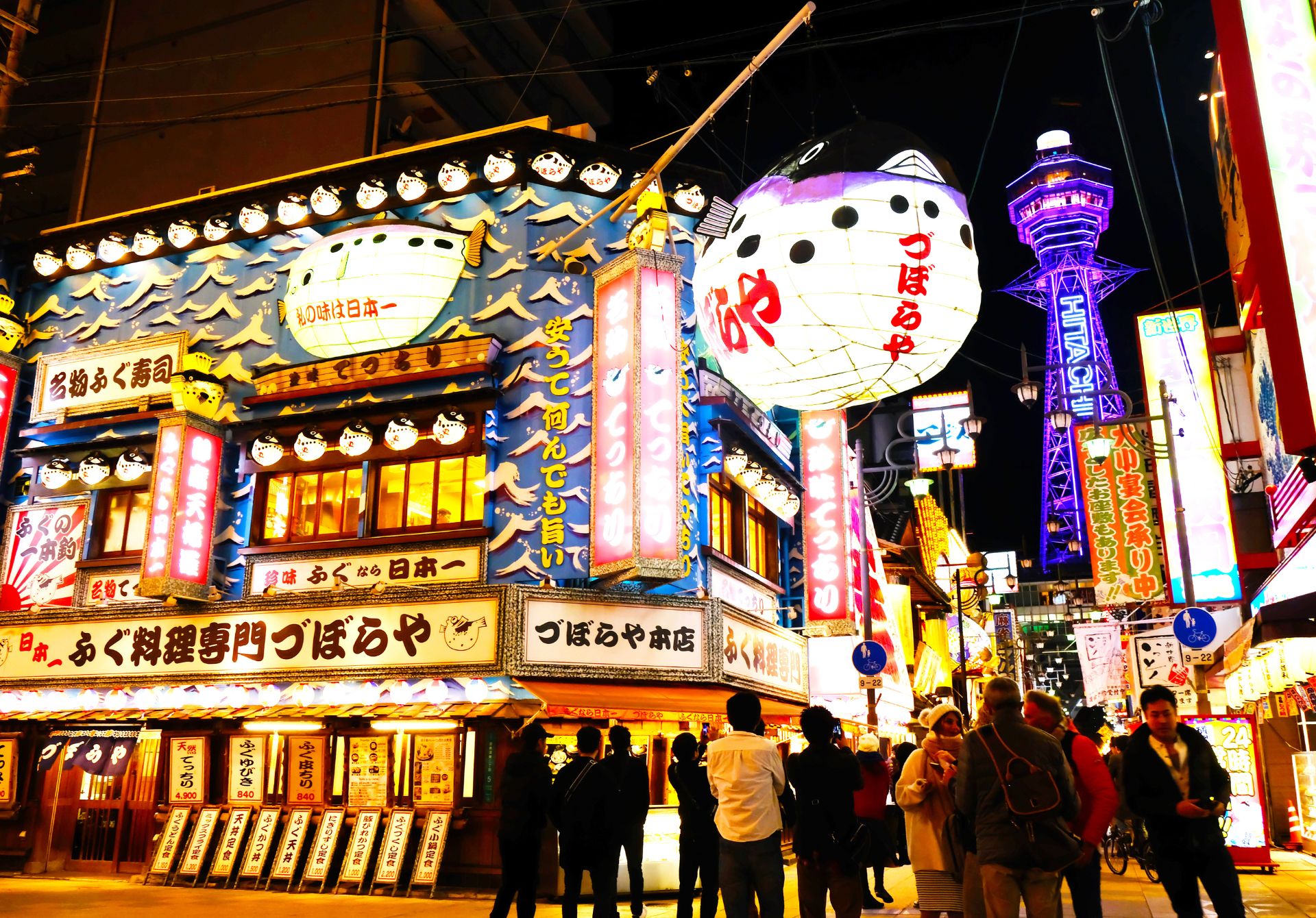Step into Shinsekai, a vibrant neighborhood that feels like a time capsule of Japan’s past and a glimpse into its quirky present. Nestled in the heart of Osaka, Shinsekai (literally meaning “New World”) offers visitors a unique blend of retro charm, mouthwatering street food, and an atmosphere that’s distinctly different from the polished tourist spots you might find elsewhere in Japan.
A Brief History: From Grand Plans to Gritty Charm
Shinsekai’s story began in the early 20th century with grand aspirations:
- Established in 1912 as a planned entertainment district
- The northern half modeled after Paris, southern half after Coney Island
- Home to Luna Park, a groundbreaking amusement park (closed in 1923)
- Fell into decline after World War II, earning a gritty reputation
- Recent years have seen a resurgence of interest and revitalization efforts
Today, Shinsekai stands as a fascinating example of urban resilience, where faded dreams have given way to a uniquely captivating neighborhood.
Tsutenkaku: The Tower That Defines the Skyline
No visit to Shinsekai is complete without a trip to its iconic landmark, Tsutenkaku Tower:
- Standing at 103 meters tall, it’s a retro-futuristic beacon
- Originally built in 1912, rebuilt in 1956 after wartime damage
- Observation decks offer panoramic views of Osaka
- Features the Billiken statue, Osaka’s “God of Happiness”
- Illuminated at night, creating a dazzling spectacle
Pro tip: Time your visit for sunset to witness the city transform as the tower lights up!
Kushi-katsu: Shinsekai’s Culinary Claim to Fame
If there’s one thing you absolutely must try in Shinsekai, it’s kushi-katsu. These deep-fried skewers of meat, seafood, and vegetables are the area’s signature dish:
- Originated in Shinsekai in the late 1920s
- Daruma, founded in 1929, claims to be the originator
- Crispy, golden exterior with a juicy interior
- Dipped in a communal sauce (remember, no double-dipping!)
- Popular varieties include beef, chicken, lotus root, and cheese
For the ultimate kushi-katsu experience, join the locals at a standing bar and order a variety of skewers with a cold beer. It’s a culinary adventure you won’t forget!
Beyond the Skewers: Shinsekai’s Culinary Landscape
While kushi-katsu might be the star, Shinsekai’s food scene has much more to offer:
- Fugu (pufferfish) restaurants for the adventurous eater
- Horumon (offal) dishes, a local specialty
- Takoyaki (octopus balls) stands for a quick snack
- Retro cafes serving nostalgic Japanese comfort food
- Izakayas (Japanese pubs) for a lively night out
Don’t be afraid to explore the narrow alleyways – some of the best-hidden gems are tucked away off the main streets!
Retro Gaming and Entertainment
Shinsekai isn’t just about food; it’s also a haven for those seeking nostalgic entertainment:
- Numerous mahjong parlors for tile-slapping action
- Old-school arcades with retro games and Pachinko machines
- Karaoke boxes for unleashing your inner J-pop star
- Spa World, a massive onsen (hot spring) complex nearby
- Street performers and fortune tellers add to the lively atmosphere
For a truly unique experience, try your hand at a traditional Japanese game in one of the area’s many game centers. Who knows, you might discover a new hobby!
Shopping for Quirky Souvenirs
Shinsekai’s shopping scene is as eclectic as the neighborhood itself:
- Vintage clothing stores with retro Japanese fashion
- Shops selling kitschy Osaka souvenirs and local crafts
- Traditional Japanese goods like fans, ceramics, and textiles
- Anime and manga-related merchandise
- Local food products and snacks for edible souvenirs
Keep an eye out for Billiken merchandise – these smiling “God of Happiness” figurines make for unique Osaka-specific souvenirs.
Best Times to Visit
Shinsekai has a different character depending on when you visit:
- Daytime: Perfect for photography and exploring shops
- Evening: The neon signs come alive, creating a vibrant atmosphere
- Weekends: Busier, with more street performances and events
- January: New Year’s celebrations at nearby Imamiya Ebisu Shrine
- July: The Shinsekai Summer Festival brings additional energy to the area
For the best experience, consider visiting in the late afternoon and staying into the evening to see the neighborhood’s transformation.
Navigating Shinsekai: Tips for Tourists
To make the most of your visit to Shinsekai, keep these tips in mind:
- Nearest stations: Ebisucho (Sakaisuji Line) or Dobutsuen-mae (Midosuji Line)
- Walking tours are available for those wanting deeper historical context
- Be respectful when taking photos, especially of local businesses
- Cash is still king in many smaller establishments
- Learn a few basic Japanese phrases – it goes a long way!
While Shinsekai is generally safe, as with any urban area, stay aware of your surroundings, especially at night.
Conclusion: Embracing the Chaos of Shinsekai
Shinsekai might not be the Japan of glossy travel brochures, but that’s precisely what makes it special. This neighborhood offers a raw, unfiltered glimpse into a side of Osaka that many tourists never see. From the sizzling kushi-katsu stands to the shadow of Tsutenkaku Tower, Shinsekai is a sensory overload in the best possible way.
For those willing to embrace its chaotic charm, Shinsekai rewards visitors with unforgettable experiences, delicious food, and a chance to step back in time while firmly rooted in the present. So come with an open mind, an empty stomach, and a sense of adventure – Shinsekai is waiting to show you its own unique version of Japan’s “New World.”

